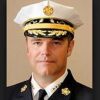Editor’s note: Chief Adam K. Thiel looks at how civilian-performed rescues can go either very well or very bad and advises how to best prepare residents for Good Samaritan situations.
We hear a lot these days about the whole-community approach to emergency prevention, preparedness, response and recovery.
For good reasons, we’re spending time trying to educate our residents about our capabilities, limitations and how they can help themselves —and their neighbors — after a disaster or emergency incident. We know that governments, including fire departments, cannot always provide all the necessary services after a catastrophic event.
As these stories demonstrate, however, there is a potential downside to having untrained civilians — sometimes called Good Samaritans — attempt to mitigate emergencies before the arrival of trained responders.
We know, of course, that emergency scenes can be dangerous even for skilled professionals (career and volunteer) with proper PPE and equipment. To the average person, though, our job can look “easy” sometimes, especially when the hazards are invisible or difficult to identify.
So how do we help people find a balance between “neighbor helping neighbor” and keeping themselves safe?
The answer, as with so many things, is public education. Beyond the opportunities we have to reach people through delivering regular fire and life safety curricula, we can also develop CERT programs and other training packages that give folks the tools to “do no harm” to themselves and others.
Stay safe!


